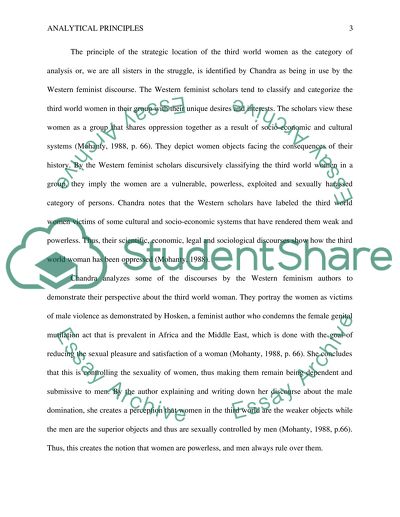Cite this document
(Under Western Eyes: Feminist Scholarship and Colonial Discourses Essay - 2, n.d.)
Under Western Eyes: Feminist Scholarship and Colonial Discourses Essay - 2. Retrieved from https://studentshare.org/gender-sexual-studies/1682440-gender-and-history-in-modern-south-asia-essay-1
Under Western Eyes: Feminist Scholarship and Colonial Discourses Essay - 2. Retrieved from https://studentshare.org/gender-sexual-studies/1682440-gender-and-history-in-modern-south-asia-essay-1
(Under Western Eyes: Feminist Scholarship and Colonial Discourses Essay - 2)
Under Western Eyes: Feminist Scholarship and Colonial Discourses Essay - 2. https://studentshare.org/gender-sexual-studies/1682440-gender-and-history-in-modern-south-asia-essay-1.
Under Western Eyes: Feminist Scholarship and Colonial Discourses Essay - 2. https://studentshare.org/gender-sexual-studies/1682440-gender-and-history-in-modern-south-asia-essay-1.
“Under Western Eyes: Feminist Scholarship and Colonial Discourses Essay - 2”, n.d. https://studentshare.org/gender-sexual-studies/1682440-gender-and-history-in-modern-south-asia-essay-1.


